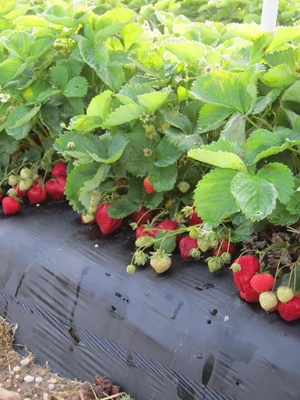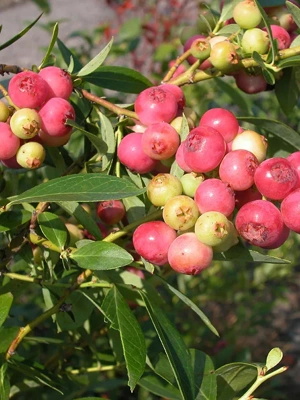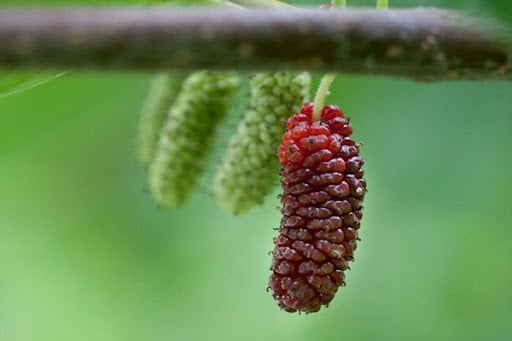Currants and Gooseberries

Currants and gooseberries are related species (of the genus Ribes) that produce great fruit for eating fresh or making jams, jellies and pies.
Gooseberries can be as small as a pea or as big as a quarter, and range in color from green to lavender to a deep red. They have a nice crunch, and the flavor is something like a cross between a kiwi and a grape. The bushes have thorns, which make harvesting a rather prickly affair. Currants, which come in white, red and black, are slightly smaller than blueberries. They have a deep, sweet-sour taste that is excellent in beverages, syrups and jellies. Cassis is a popularFrench cordial made from black currants.
Both gooseberries and currants do best in full sun, planted about 5 feet apart. They like rich soil that stays lightly moist but drains well. They are susceptible to a potassium deficiency, which is indicated by leaf edges that appear scorched. Add greensand to the soil at planting time and side dress each year or two with an all-purpose fertilizer. Both currants and gooseberries can be affected by mildew, so plant them where there is good air circulation and plenty of sunshine.
Currants and gooseberries are self pollinating, so you can have just one of each and still get fruit. They are cold-climate plants that do best in zones 3 to 6, though some cultivars do well as far south as Virginia. Afternoon shade and heavy mulching to keep the soil cool will help them survive in borderline areas.
Gooseberries and currants require very little pruning. Broken or rubbing branches should be removed in fall or early spring. Take out a few older canes in mature plants to make room for new growth. Currants are more vigorous than gooseberries, and yields improve when plants are pruned.
Unfortunately both currants and gooseberries can be secondary hosts (they are not affected, but are carriers) for a disease (pine blister rust) that can kill white pine trees. For this reason, some states have laws prohibiting or restricting the distribution and growth of these plants. The good news is, there are now many disease-resistant cultivars available, and they are allowed in most places. As a precaution, double-check with a local nursery or your local Cooperative Extension office.
Currants and gooseberries should produce about 10 pounds of fruit per bush each year.
Last updated: 06/23/2022
Print this Article:
Related items
Related Articles
Get the Dirt
Stay up to date on new articles and advice. Please fill out the information below.










